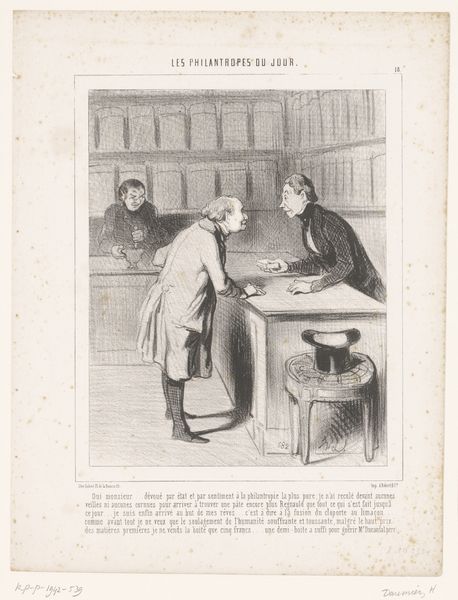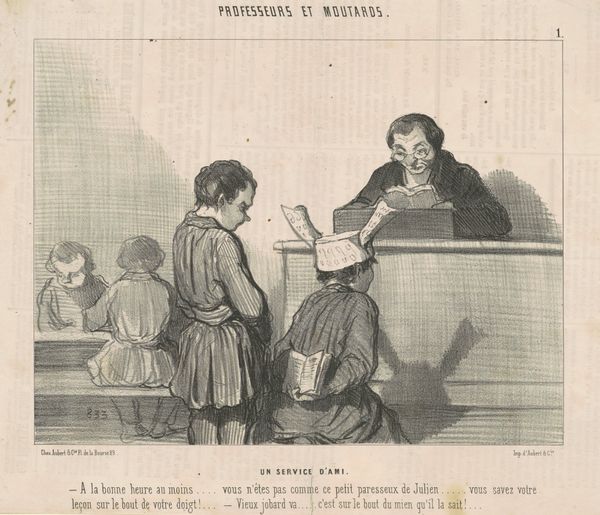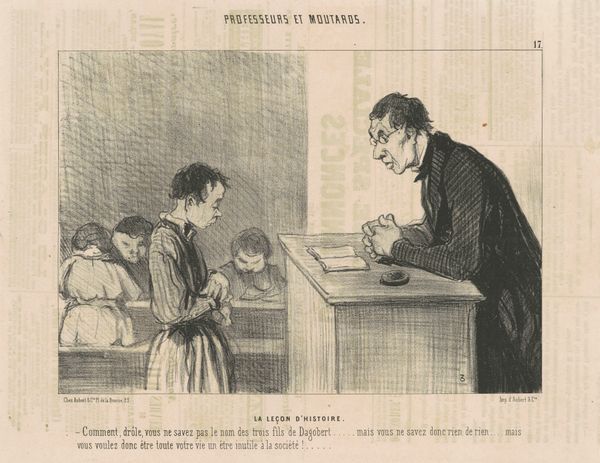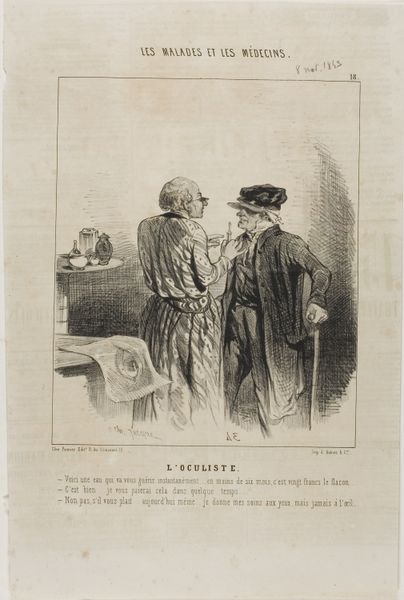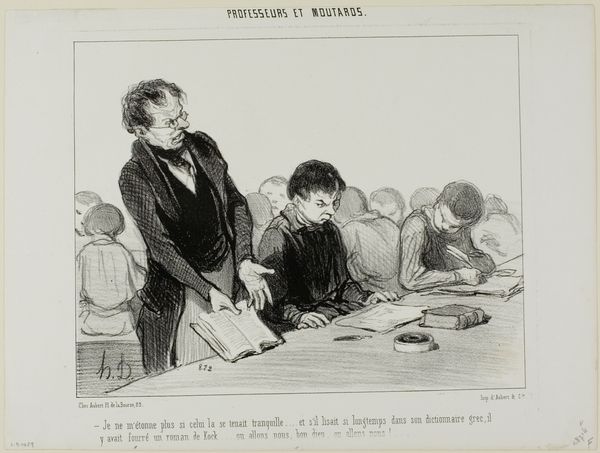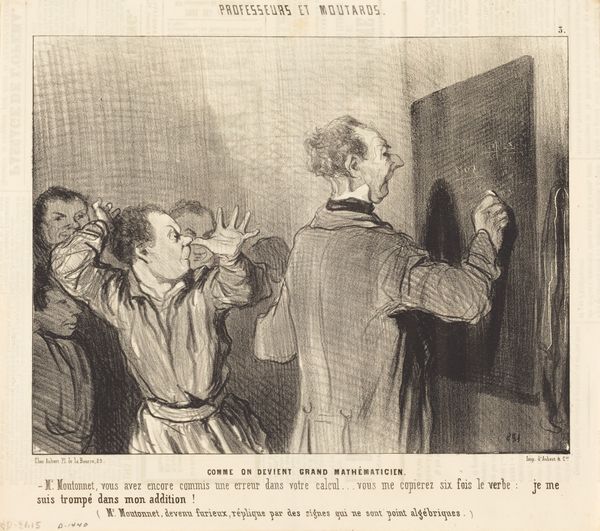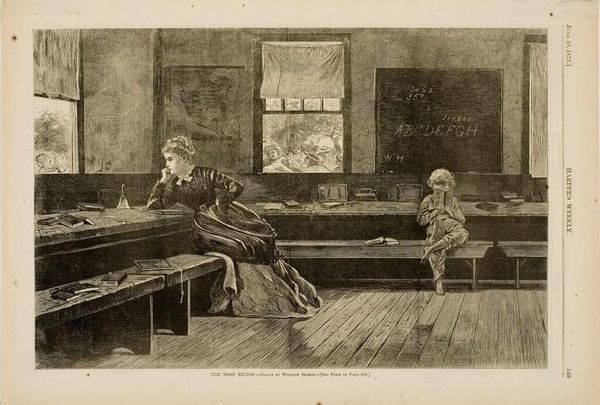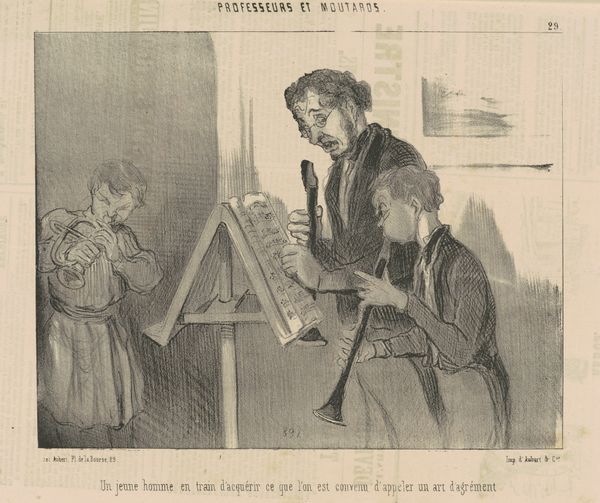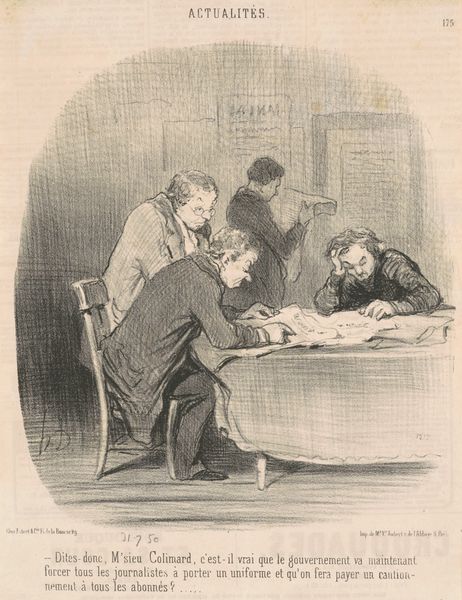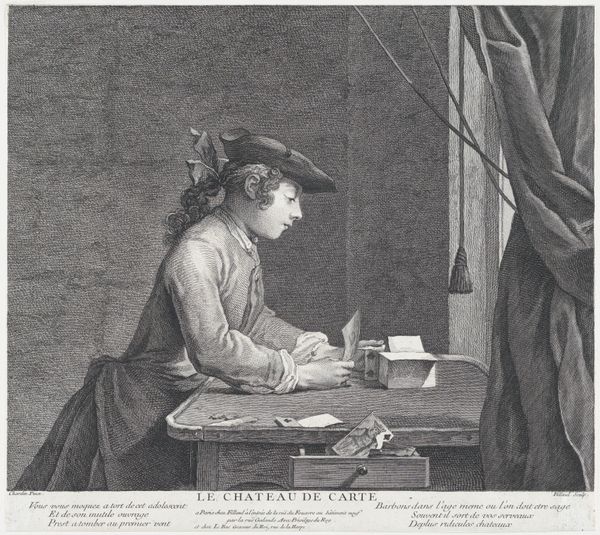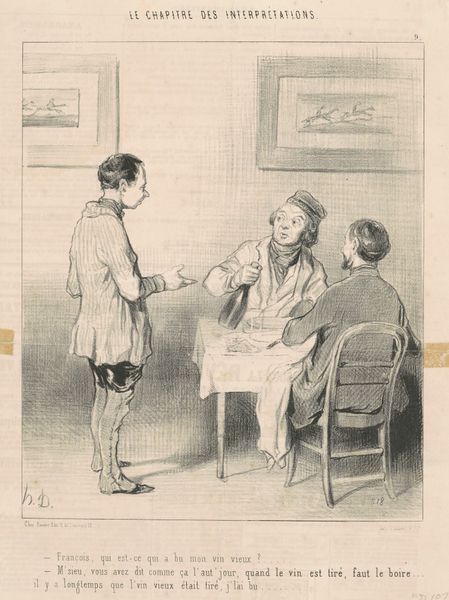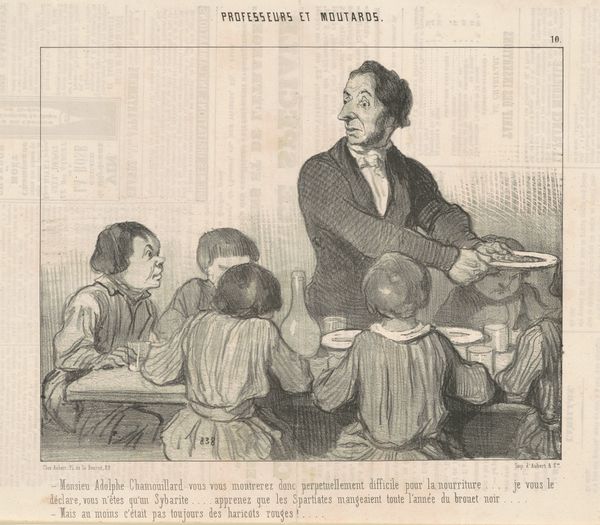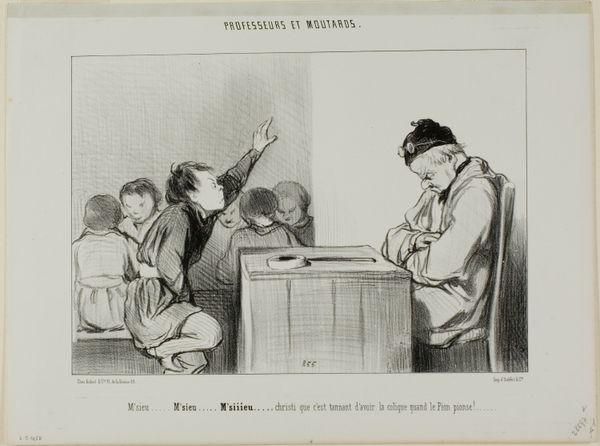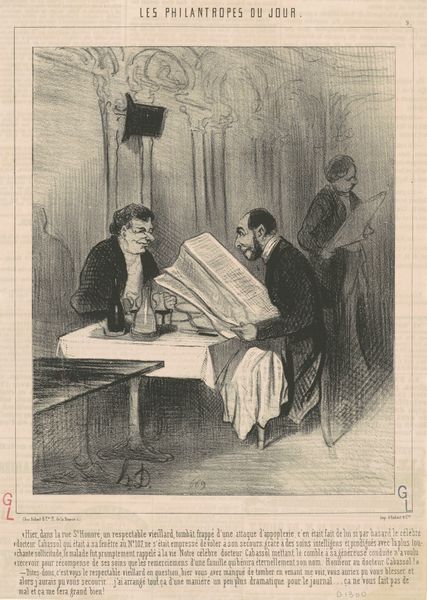
lithograph, print
#
lithograph
# print
#
caricature
#
figuration
#
romanticism
#
genre-painting
Copyright: National Gallery of Art: CC0 1.0
This lithograph, made by Honoré Daumier, depicts a classroom scene with a teacher wielding a peculiar instrument. Note the long-handled flyswatter he holds menacingly over the students. This seemingly simple tool carries a wealth of cultural baggage. The fly, often associated with disease and decay, becomes a symbol of the irksome distractions that disrupt the pursuit of knowledge. The act of swatting, then, takes on a deeper meaning—it is a violent attempt to control the unruly forces of ignorance and disorder. Consider how similar gestures of control appear throughout history: the shepherd’s crook, the conductor’s baton. Each embodies a desire to impose order, to direct the flow of energy. Here, Daumier suggests the flyswatter is less a tool for teaching and more a symbol of oppression. The faces and postures of the students speak to the psychological impact of such a method, a form of discipline bordering on abuse. The flyswatter is not just an instrument; it’s a relic. It’s a reminder of how our methods of instruction reflect a cycle of control and resistance, reappearing in various forms across time.
Comments
No comments
Be the first to comment and join the conversation on the ultimate creative platform.
